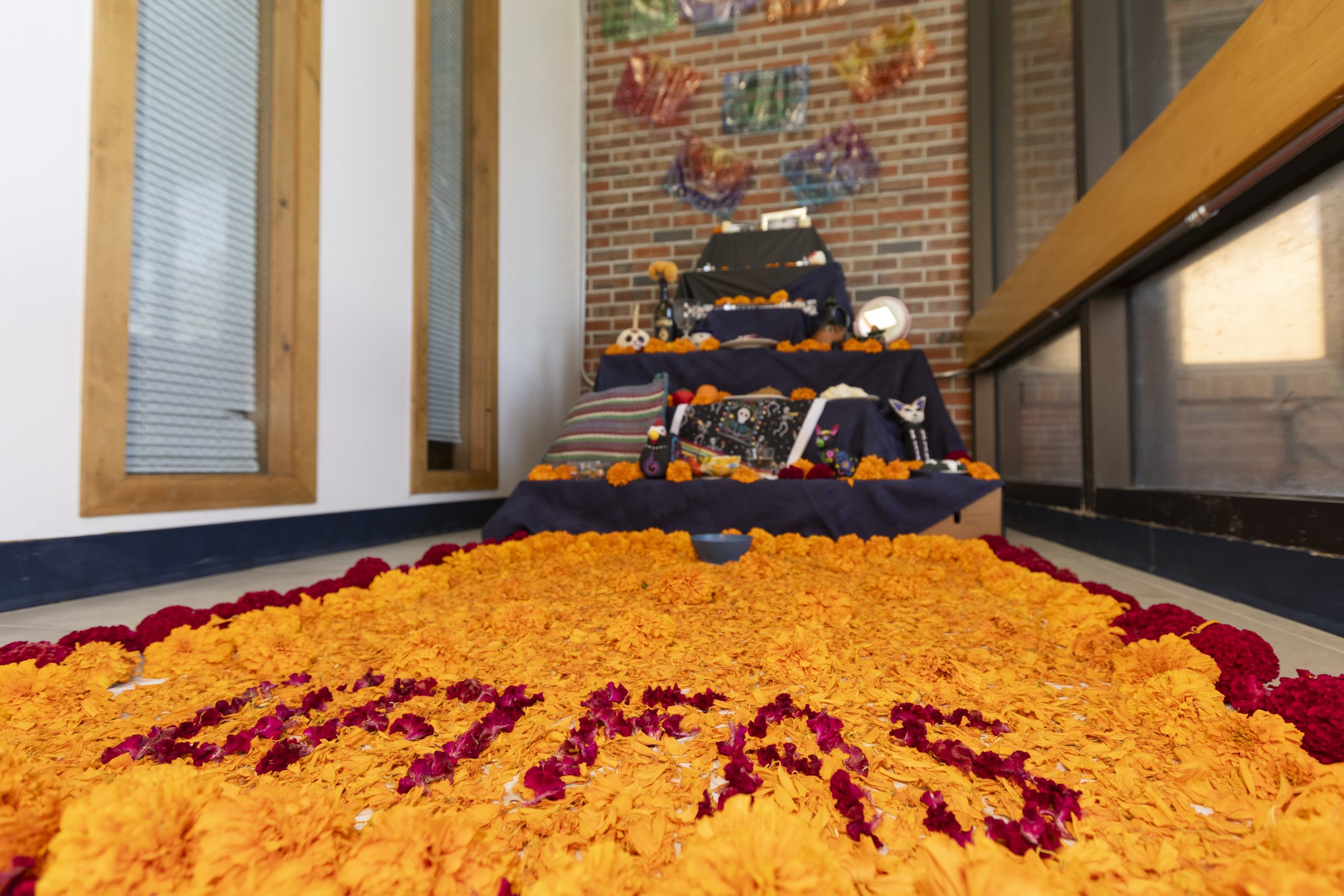In Martín Zapién’s hometown in Central Mexico, neon-red celosias and marigolds – known as “cempatsuchitl” in Mexico – saturate the side of roads. As the seasons change, residents pick these flowers and use them to adorn altars for Día de los Muertos, the Mexican celebration to remember and honor the lives of those who have died. Revelers believe loved ones who have passed can visit from the afterlife during the celebration.
Zapién, a Ph.D. student at the University of Florida’s horticultural sciences department, and his colleagues wanted to bring the joy and kinship of Día de los Muertos to UF’s campus, he said.
He and a team went to work to plant celosias and marigolds in the horticultural sciences’ field, and soon, blooms of Gators-orange marigolds and velvet-soft celosias gave a burst of color the field. The blooms were harvested and used for a traditional altar, an “ofrenda,” in Fifield Hall.

The ofrenda at Fifield Hall is decorated with a walkway of marigold petals and bulbs in the front and adorned with two photographs of loved ones, painted guardian animal statues called “alebrijes,” a pumpkin with traditional skull face paint and food as gifts for the deceased.
Zapién said he felt honored that the university has been so embracing of his idea to bring his culture to his peers. As an international student, he said, it’s been heartwarming to see parts of his home embraced on campus.
“I feel that this initiative has been very welcomed,” he said. “This is just one way to show that you belong.”
Marigolds are used to create a carpet of petals from the ofrenda to bring the deceased back to the living world, but in nature they help control pests and other organisms that harm plants. Marigolds keep away nematodes, very small worms, by excreting a compound in their roots that is a natural repellent to the plant-eating pest, said Zack Black, farm manager for UF’s horticultural sciences department.
The flowers were planted in July and moved into the field in August. The plan for the flowers is to gather the seeds from the marigolds and celosias to grow again next year, he said. Dried celosias may be used to decorate Fifield Hall for other holidays like Thanksgiving.

Zapién said it was important to bring Día de los Muertos to campus because everyone deserves to celebrate their deceased loved ones and to tap into feelings of heritage and community.
“Día de los Muertos is a way to make us feel like people who have left us have never really left,” he said.
He said the sweet scent of marigolds and celosias, mixed with incense and cooking food, makes up an iconic smell for Día de los Muertos. “It’s a smell that brings joy instead of sadness.”
###
ABOUT UF/IFAS
The mission of the University of Florida Institute of Food and Agricultural Sciences (UF/IFAS) is to develop knowledge relevant to agricultural, human and natural resources and to make that knowledge available to sustain and enhance the quality of human life. With more than a dozen research facilities, 67 county Extension offices, and award-winning students and faculty in the UF College of Agricultural and Life Sciences, UF/IFAS brings science-based solutions to the state’s agricultural and natural resources industries, and all Florida residents.
 3
3
